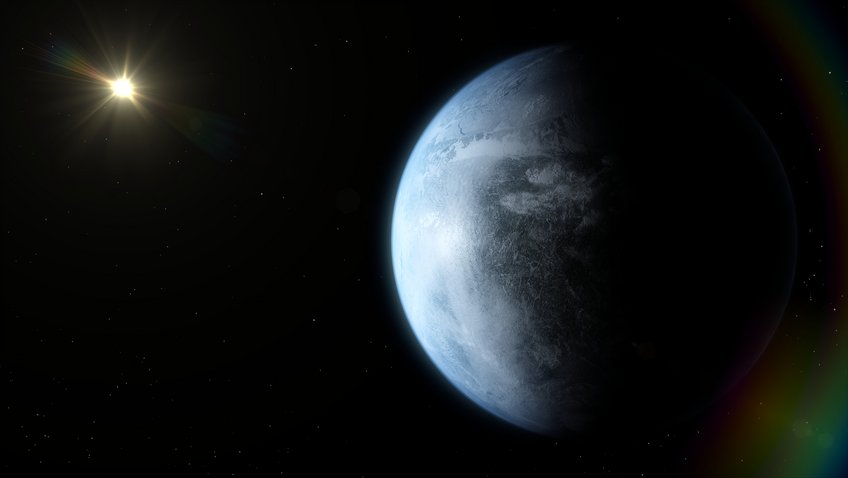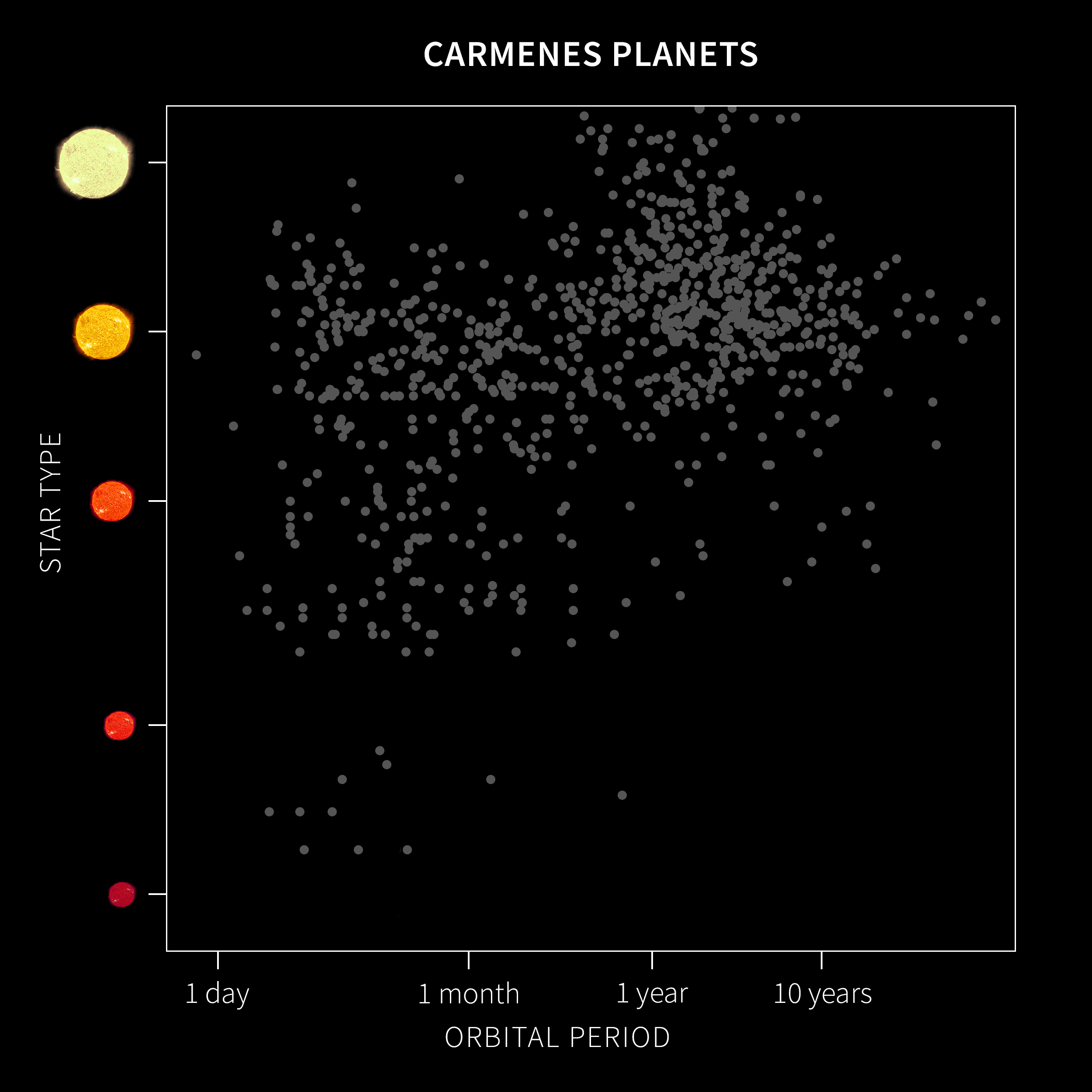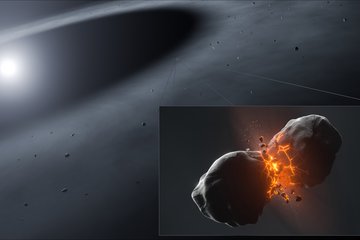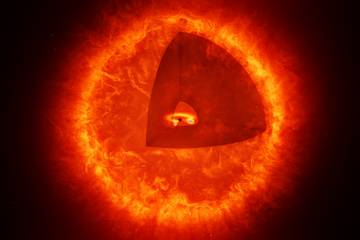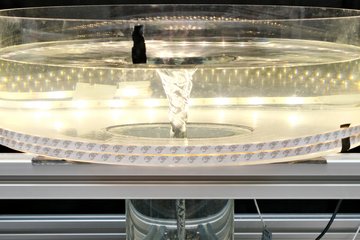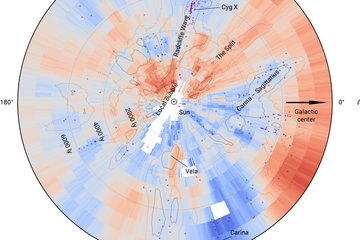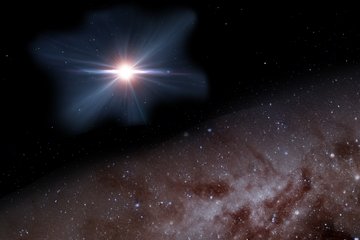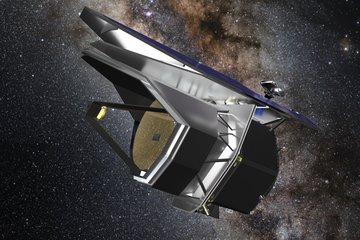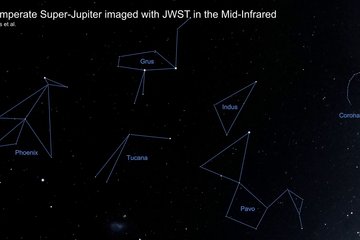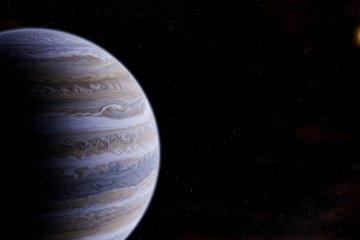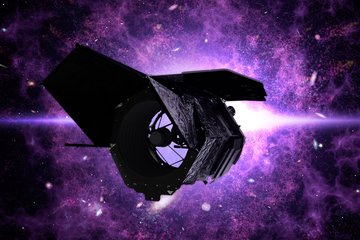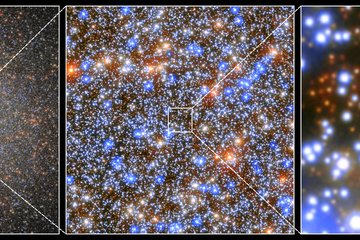CARMENES project boosts the number of known planets in the solar neighbourhood
The CARMENES program, led by a consortium of Spanish and German research institutions, in which the Max Planck Institute for Astronomy (MPIA) is a partner, has released 20,000 observations of more than 300 stars. These measurements include data on 59 new planets. These are either new discoveries or confirmations of still uncertain candidates. A dozen planets are potentially habitable. This spectroscopic data set was obtained at the Calar Alto Observatory in Spain and is now publicly available. The CARMENES instrument employed in this survey has proven to be a success. It will continue to provide information on planets around small cool stars until at least the end of 2023.
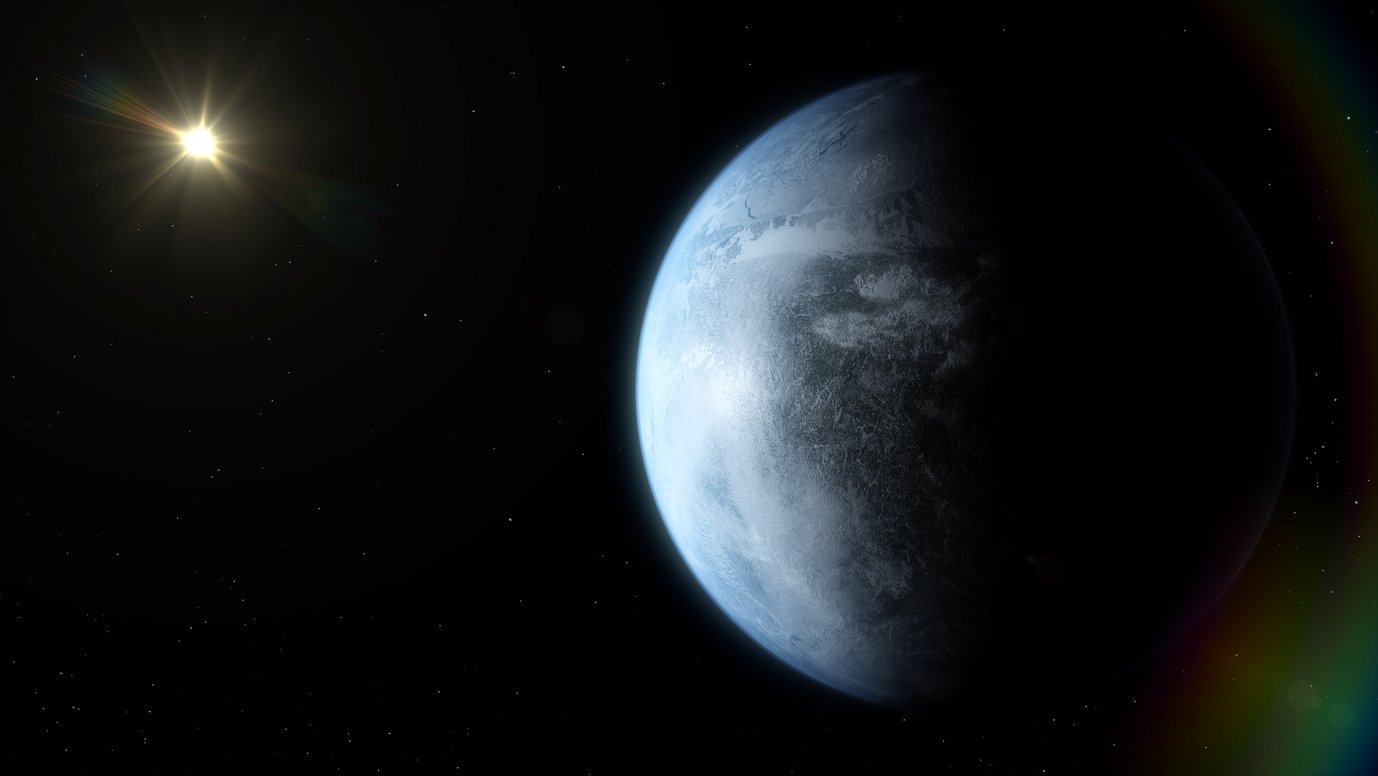
The CARMENES project has just published data from about 20,000 observations taken between 2016 and 2020 for a sample of 362 nearby cool stars. The project is financed by Spanish and German funds. It uses an instrument at Calar Alto Observatory to find Earth-like exoplanets (rocky and temperate) with the possibility of harbouring liquid water on their surfaces if they reside in the so-called “habitable zone” of their star. Among the multitude of published measurement data, those that include signatures of 59 new planets stand out. Of these planets, a dozen are potentially life-friendly. The study appears in the journal Astronomy & Astrophysics.
CARMENES is the name of the scientific project and the spectrograph employed to carry out the observations. It is among the very best planet hunters worldwide using the radial velocity method. The CARMENES consortium that designed and built this instrument comprises more than 200 scientists and engineers from 11 Spanish and German institutions. The collaborating research facilities are the Max-Planck-Institut für Astronomie (MPIA), the Instituto de Astrofísica de Andalucía (IAA-CSIC), the Landessternwarte Königstuhl (LSW), the Institut de Ciències de l’Espai (ICE-CSIC), the Institut für Astrophysik Göttingen (IAG), the Universidad Complutense de Madrid (UCM), the Thüringer Landessternwarte Tautenburg (TLS), the Instituto de Astrofísica de Canarias (IAC), the Hamburger Sternwarte (HS), the Centro de Astrobiología (CAB, CSIC-INTA) and the Centro Astronómico Hispano-Alemán (CAHA). Dr Ignasi Ribas, a researcher at the ICE-CSIC and Director of the Institute of Space Studies of Catalonia (IEEC — Institut d’Estudis Espacials de Catalunya), is the first author of this recently published work involving about a hundred experts from more than 30 research centres.
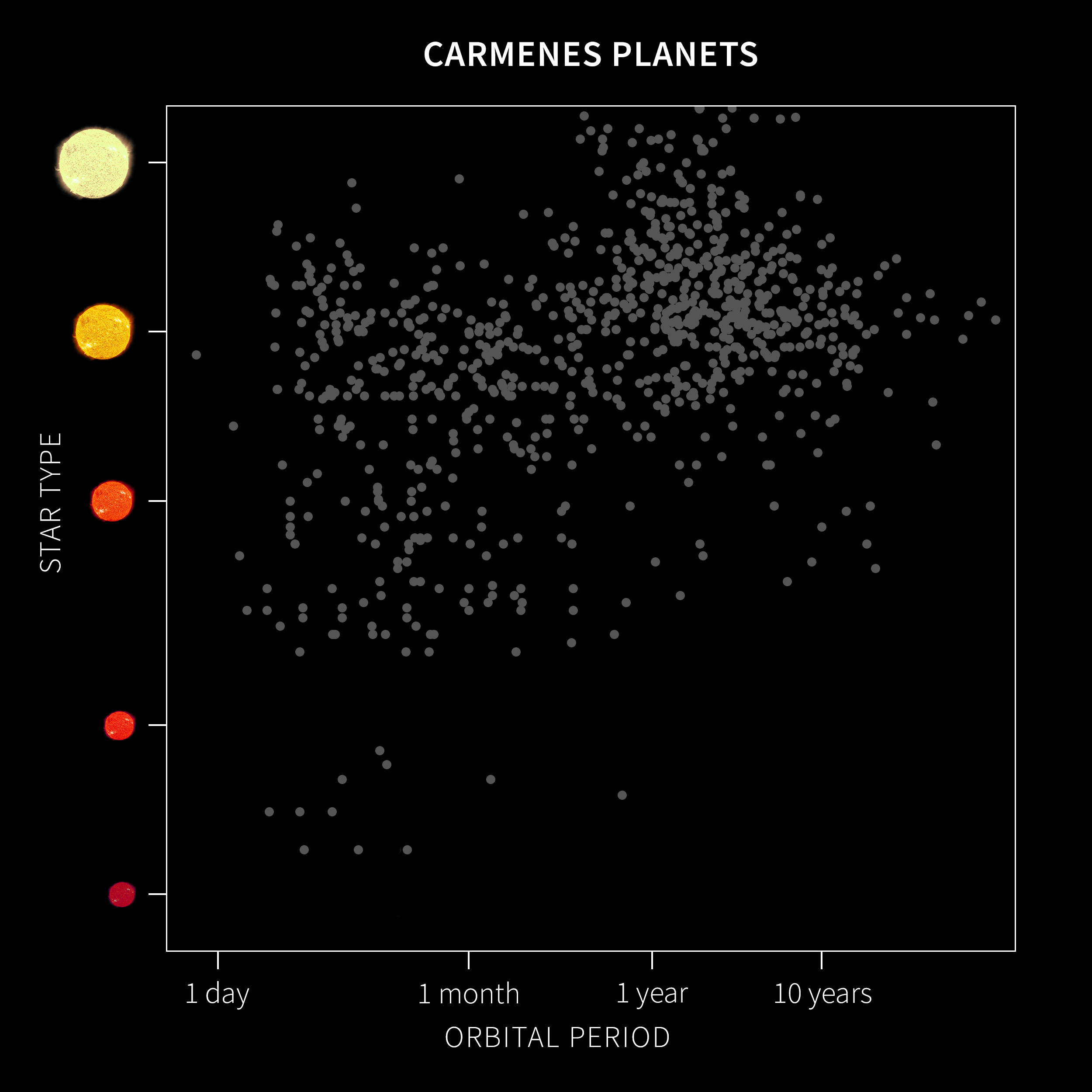
The CARMENES instrument is an optical and near-infrared spectrograph, i.e. a device that measures both visible and infrared light from the targeted objects. As of 2015, it served as a planet hunter at Calar Alto Observatory. Its purpose is to look for terrestrial-type exoplanets of nearby red dwarf stars. The light collected from any given star (the stellar spectrum) can give away the presence of exoplanets as it allows researchers to measure the small motions of the star produced by the gravitational pull of the orbiting planets. From the high-resolution spectra obtained with CARMENES, astronomers determine the star’s velocity with an accuracy of one metre per second, which is a major technological challenge. This technique is capable of detecting Earth-sized planets around low-mass stars.
MPIA has contributed significantly to developing the CARMENES spectrograph and its scientific success. In particular, MPIA scientists and engineers have developed and built its electronic camera, i.e. the part that records the spectrally decomposed light and passes it on to the computer as digitally processed data. “MPIA scientists have been instrumental in the discovery of several rocky planets. Recently, they have reported on Wolf 1069 b, one of the most promising exoplanets that may be able to sustain habitable conditions,” MPIA Director Thomas Henning points out.
“Since it came into operation, CARMENES has re-analysed 17 known planets and has discovered and confirmed 59 new planets around stars in the vicinity of our Solar System, making a significant contribution to expanding the census of nearby exoplanets,” explains Ignasi Ribas. In fact, this instrument has boosted the number of known exoplanets around nearby cool stars by doubling those detected with the method described above. The CARMENES team hopes that, with the publication of this first large dataset, the research community will analyse it and increase its scientific output further. Importantly, CARMENES has observed almost half of all nearby small stars (part of them can only be observed from the Southern Hemisphere). In addition, the spectra obtained also provide extremely valuable information about the atmospheres of the stars and their planets, among other science cases.
The paper published in Astronomy & Astrophysics is the 100th article of the CARMENES consortium, demonstrating the project’s success in providing information about Earth-like exoplanets and their stars. In this study, the visible-light data were released; experts are still improving the infrared data processing. Once they become public, astronomers will have a second large set of observations to work with.
The CARMENES project continues in CARMENES Legacy-Plus, which started in 2021 and keeps taking more observations of the same stars. “In order to determine the existence of planets around a star, we observe it a minimum of 50 times. Although the first round of data have already been published to grant access to the scientific community, the observations are still ongoing,” explains Juan Carlos Morales, IEEC researcher at ICE-CSIC. The observations made in this project extension will continue at least until the end of 2023.
More information
MPIA scientists involved in this study are Thomas Henning (MPIA Director), Martin Kürster, Nestor Espinoza, Sara Khalafinejad, Diana Kossakowski, Luigi Mancini, Karan Molaverdikhani, Aleksei Pavlov, Martin Schlecker, and Trifon Trifonov.
This press release is coordinated with and based on a similar sounding article of the CARMENES collaboration of the same day, prepared by the Institut de Ciències de l'Espai (ICE-CSIC).
MN
